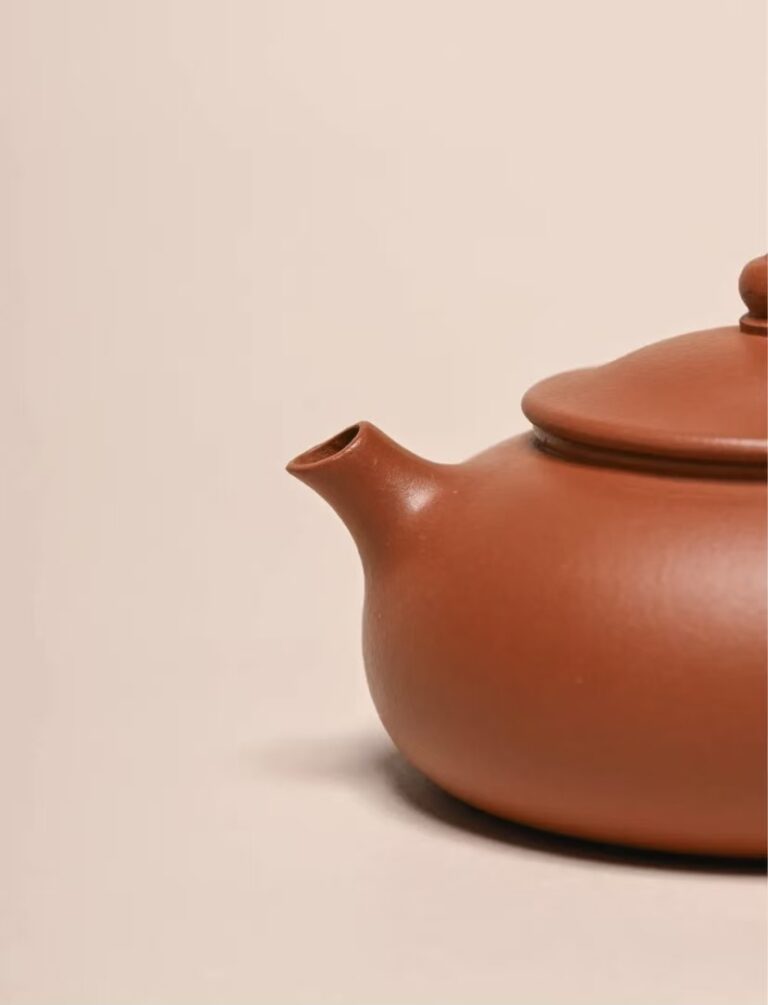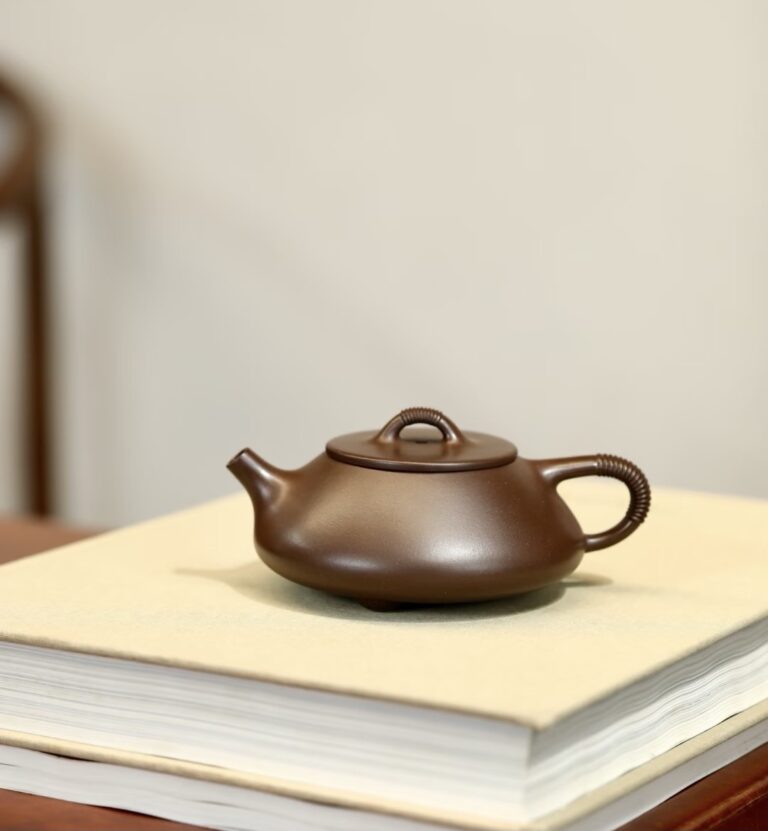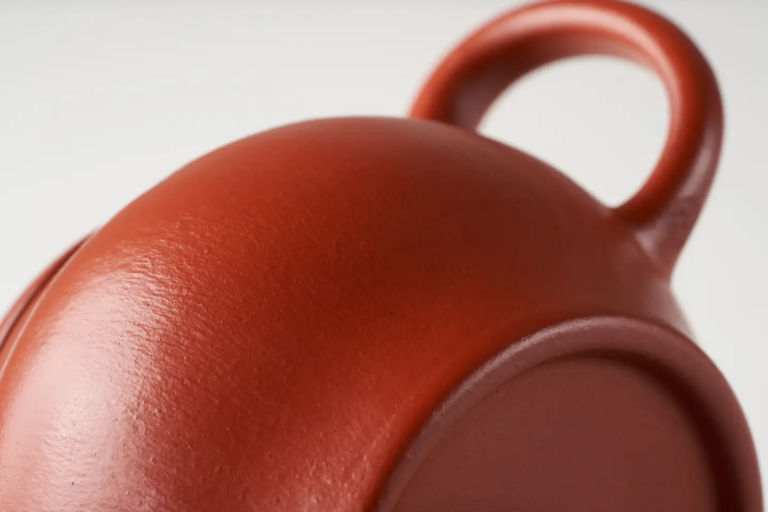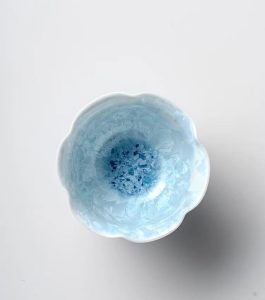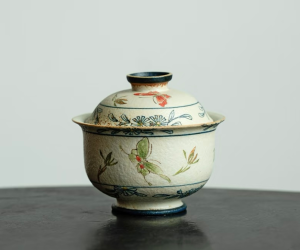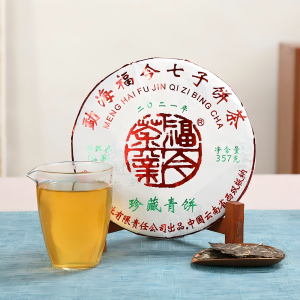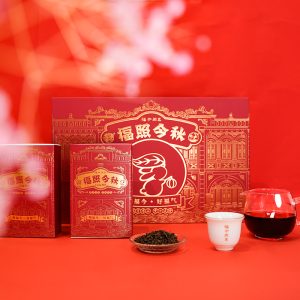
The art of Chinese tea is an experience for the senses, and at its heart is the traditional tea set. Far more than just a pot and cups, it’s a collection of specialized tools, each with a specific purpose, designed to unlock the true character of the tea leaves.
Understanding these components is the first step to transforming your tea session from a simple brew into a mindful ritual. This guide will walk you through the 10 essential pieces of a traditional Chinese tea set, explaining what they are and, more importantly, why they matter.
A Note on Visuals: This is a visual guide! For each component, we highly recommend using your own high-quality, clearly labeled photograph. Showing your own products in action is the best way to demonstrate authenticity and expertise.
The 10 Essential Components of a Gongfu Tea Set
Here are the key players on the tea tray. We’ll start with the most critical brewing vessels and move through the supporting cast that makes the ceremony seamless.
1. Teapot (茶壶, Cháhú)

What it is: The primary vessel for brewing tea. Traditional Chinese teapots are much smaller than their Western counterparts, typically holding only 100-200ml.
Why it’s essential: Its small size is designed for concentrated, “Gongfu style” brewing, allowing for multiple short infusions that reveal the tea’s evolving flavor profile. Yixing clay teapots are the most revered, as their porous nature absorbs tea oils over time, enhancing the flavor with each use.
Pro-Tip: Dedicate an unglazed Yixing teapot to a single type of tea to prevent flavor cross-contamination and build a unique seasoning.
Unsure about materials? The material of your teapot plays a huge role in the flavor. If you are unsure whether to choose Yixing Clay (for Pu-erh) or Porcelain (for Oolong Tea), check out our comprehensive Guide to Chinese Tea Sets to help you decide.
➡️ Browse our collection of authentic Yixing Teapots
2. Gaiwan (盖碗, Gàiwǎn)

See the tea leaves unfurl and savor the captured aroma. Browse our Gaiwans now.
What it is: A versatile lidded bowl, consisting of a saucer, a bowl, and a lid. It acts as both the brewing vessel and the serving tool.
Why it’s essential: A Gaiwan offers unparalleled control over the brew. The wide opening allows you to observe the leaves unfurl, the lid helps control temperature and strain the tea, and its porcelain or glass material provides a neutral vessel perfect for delicate green, white, and floral oolong teas.
3. Fair Cup/Serving Pitcher (公道杯, Gōngdào Bēi)

Floral Glass Tea Pitcher – Gong Dao Bei – 210ml
What it is: A serving pitcher, also called a Cha Hai (茶海, “Ocean of Tea”).
Why it’s essential: This is the key to fairness and consistency. After brewing, the tea is decanted into the Fair Cup before serving. This ensures that every person receives a cup of tea with the exact same strength and flavor, preventing the last cup from being bitter and over-steeped.
4. Tea Cups (茶杯, Chábēi)

Explore Our Exquisite Collection of Chinese Tea Cups
Chinese tea cups are notably smaller than their Western counterparts, typically holding just 20-30ml of liquid—about one or two sips. This small size serves several purposes in the traditional approach to tea appreciation:
•Allows tea to be consumed while still at its optimal temperature
•Encourages mindful sipping rather than casual drinking
•Enables multiple infusions to be compared side by side
•Facilitates the social ritual of repeatedly filling guests’ cups
Traditional Chinese tea cups come in various styles, each suited to different types of tea:
Tall, narrow cups (品茗杯, pǐnmíng bēi) are designed for appreciating the aroma of certain oolong teas. Their height concentrates the fragrance, while their narrow opening directs it toward the nose during sipping.
Wide, shallow cups (茶盏, chá zhǎn) are preferred for green and white teas, allowing their subtle aromas to spread and their delicate colors to be appreciated against the white porcelain background.
Aroma cups (闻香杯, wénxiāng bēi) are used in pairs with drinking cups in some traditions, particularly in Taiwan. The tall, narrow aroma cup receives the tea first, concentrating its fragrance. After a moment, the tea is poured into the drinking cup, and the empty aroma cup is deeply inhaled to appreciate the tea’s lingering scent.
The material of tea cups significantly impacts the drinking experience. Fine porcelain cups with thin walls are prized for their ability to maintain heat while allowing the drinker to feel the tea’s temperature through the cup. The finest cups produce a clear, bell-like tone when tapped gently.
5. Tea Tray (茶盘, Chápán)
What it is: The stage for the tea ceremony. A proper tea tray has a built-in reservoir or drainage system to catch excess water.
Why it’s essential: In Gongfu brewing, hot water is used to warm the teaware and rinse the tea leaves. The tray elegantly manages all this discarded water, keeping your brewing area clean, dry, and organized.
6. Tea Scoop (茶则, Chá Zé)
What it is: A scoop, traditionally made of bamboo or wood, for measuring and transferring dry tea leaves.
Why it’s essential: It allows for precise measurement and prevents the natural oils on your hands from contaminating the delicate tea leaves, ensuring a pure and unadulterated brew.
7. Tea Strainer (茶漏, Chá Lòu)
What it is: A fine mesh strainer placed on top of the Fair Cup when pouring.
Why it’s essential: It catches any small leaf fragments or dust, ensuring the tea liquor in each cup is perfectly clear and free of debris for the best possible texture and taste.
8. The Tea Caddy (茶叶罐, Cháyè Guàn)
Proper storage is essential for maintaining tea quality. Traditional tea caddies are designed to protect tea leaves from their four main enemies: air, light, moisture, and odors. They come in various materials:
•Tin caddies provide excellent protection from light and moisture
•Ceramic caddies offer aesthetic appeal and good sealing properties
•Wooden caddies, often made from bamboo, provide natural humidity regulation
The best tea caddies feature double lids to create an airtight seal, preserving the tea’s freshness and preventing it from absorbing surrounding odors.
9. The Tea Pet (茶宠, Chá Chǒng)

What it is: A small, whimsical clay figurine that sits on the tea tray.
Why it’s essential: While not functionally necessary for brewing, the Tea Pet is a beloved part of the culture. It’s “nourished” by pouring leftover tea over it. Over time, it develops a rich, glossy patina. It serves as a companion during the tea session and a symbol of good luck.
➡️ Find a companion for your tea journey in our Yixing Zisha Tea Pet
10. Tea Tools and Accessories
A complete Chinese tea set includes various specialized tools, each serving a specific function in the ceremony:
Tea Towel (茶巾, Chá Jīn)
This small cloth serves multiple functions during the tea ceremony:
•Wiping spills and drips
•Cleaning teaware between infusions
•Handling hot vessels
•Creating a clean, defined space for the ceremony
Traditional tea towels are made from absorbent, lint-free materials like cotton or linen, and may feature embroidered designs related to tea culture.
Tea Boat (茶船, Chá Chuán)
A tea boat is a small tray designed to hold a single teapot or gaiwan. Unlike the larger tea tray, it focuses on showcasing and protecting a particular brewing vessel. Tea boats are especially popular for displaying prized Yixing teapots, both during use and as decorative objects.
Tea Needle/Pick (茶针, Chá Zhēn)
This slender tool serves multiple purposes:
•Breaking apart compressed teas like pu-erh
•Clearing teapot spouts of obstructions
•Removing the lid of a hot teapot
•Cleaning narrow crevices in teaware
Tea picks are often made of stainless steel, bamboo, or wood, and may feature decorative elements on the handle.
Tea Tongs (茶夹, Chá Jiā)
These small tongs are used to handle teaware that is too hot to touch directly, particularly cups during the rinsing and warming process. They allow the host to manage hot vessels without awkwardness or risk of burns.
How to Choose Your First Tea Set
For beginners, starting with a complete set is easy. We recommend a basic setup that includes:
- A Gaiwan: It’s the most versatile brewing vessel for learning.
- A Fair Cup: This is non-negotiable for consistent brews.
- 2-4 Tea Cups: For yourself and to share with friends.
- A Simple Tea Tray: A small bamboo tray with a reservoir is perfect.
You can add other tools like tongs and scoops as your practice deepens.
The Checklist
| Component | Function | Do you need it? |
| Gaiwan / Teapot | The Vessel | Essential |
| Gong Dao Bei | Even out flavor | Highly Recommended |
| Tea Filter | Clear tea soup | Optional (Nice to have) |
| Tea Tray | Catch water | Essential for Mess-free |
Build Your Own Gongfu Setup
Now that you understand the role of each component, you can start building your own tea sanctuary.
Option A: The “One-Click” Solution (Best for Beginners)
Get everything we discussed above in a single, beautifully packaged box. No guessing, just brewing.
Option B: Mix and Match (Best for Collectors)
Already have a pot? Find the missing pieces to complete your ceremony.
Frequently Asked Questions (FAQ)
At a minimum, you need a brewing vessel (like a Gaiwan), a cup to drink from, and a bowl to discard water. However, adding a Fair Cup is the single best upgrade to immediately improve the quality and consistency of your tea.
We recommend most beginners start with a porcelain Gaiwan. It’s more versatile, allowing you to brew any type of tea, and it teaches you more about the brewing process. Yixing teapots are a wonderful next step once you’ve decided which type of tea you love most.
The small size encourages you to sip and savor the tea at its best temperature. It focuses the aroma and allows you to appreciate the subtle changes in flavor over multiple infusions, turning drinking into a mindful tasting experience.

